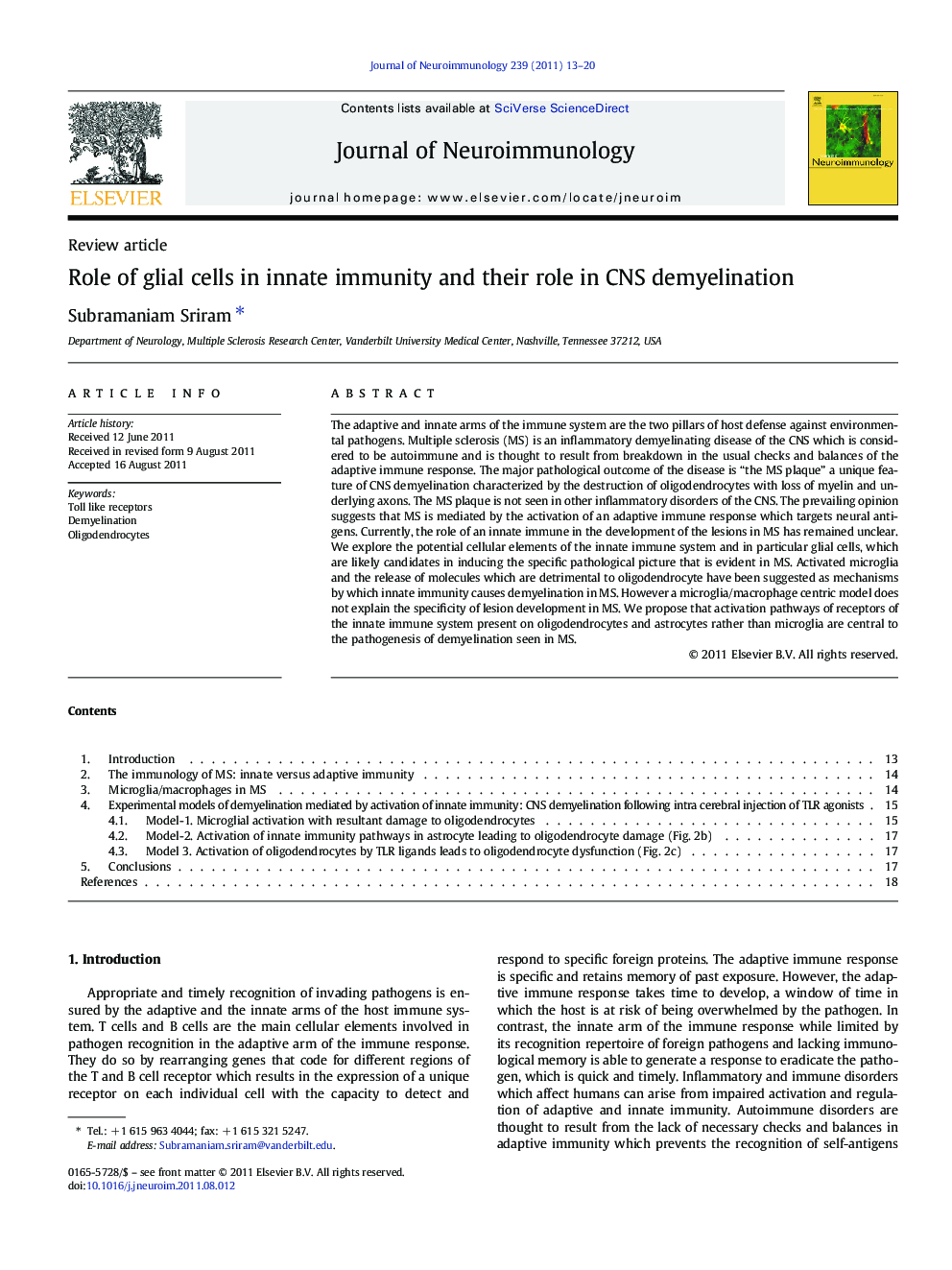| Article ID | Journal | Published Year | Pages | File Type |
|---|---|---|---|---|
| 3064426 | Journal of Neuroimmunology | 2011 | 8 Pages |
The adaptive and innate arms of the immune system are the two pillars of host defense against environmental pathogens. Multiple sclerosis (MS) is an inflammatory demyelinating disease of the CNS which is considered to be autoimmune and is thought to result from breakdown in the usual checks and balances of the adaptive immune response. The major pathological outcome of the disease is “the MS plaque” a unique feature of CNS demyelination characterized by the destruction of oligodendrocytes with loss of myelin and underlying axons. The MS plaque is not seen in other inflammatory disorders of the CNS. The prevailing opinion suggests that MS is mediated by the activation of an adaptive immune response which targets neural antigens. Currently, the role of an innate immune in the development of the lesions in MS has remained unclear. We explore the potential cellular elements of the innate immune system and in particular glial cells, which are likely candidates in inducing the specific pathological picture that is evident in MS. Activated microglia and the release of molecules which are detrimental to oligodendrocyte have been suggested as mechanisms by which innate immunity causes demyelination in MS. However a microglia/macrophage centric model does not explain the specificity of lesion development in MS. We propose that activation pathways of receptors of the innate immune system present on oligodendrocytes and astrocytes rather than microglia are central to the pathogenesis of demyelination seen in MS.
